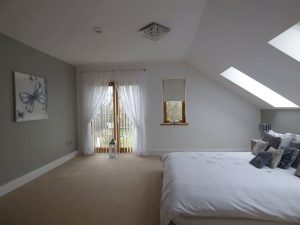We do interior designing for Residential Buildings, Commercial buildings Medical Institutions, Educational Institutions etc.
Residential building Interiors
What we do
Residential Interior Design:
- Personalization: Residential spaces should reflect the personality and preferences of the occupants. Work closely with the homeowners to understand their tastes and incorporate those elements into the design.
- Cohesive Color Palette: Choose a harmonious color scheme that flows throughout the entire home. This creates a sense of unity and makes the space feel more spacious and well-thought-out.
- Multi-functional Spaces: As homes may have limited space, consider designing areas that serve multiple purposes. For example, a guest bedroom can also function as a home office with the right furniture and layout.
- Comfortable Furniture: Invest in high-quality and comfortable furniture that complements the design and promotes relaxation. Consider the size and scale of furniture pieces to ensure they fit well within the space.
- Smart Storage Solutions: In residential design, storage is crucial to keep the space organized and clutter-free. Utilize built-in cabinets, shelves, and hidden storage options to maintain a clean aesthetic.
- Nature-Inspired Design: Biophilic design elements, such as indoor plants and natural materials, can create a calming and rejuvenating atmosphere in residential spaces.
- Energy Efficiency: Consider incorporating energy-efficient lighting fixtures and appliances to reduce utility costs and create an eco-friendly living environment.
Remember, both commercial and residential interior design should prioritize functionality, aesthetics, and the needs of the people using the space. Flexibility and adaptability are also key as needs may change over time. Always stay up-to-date with the latest design trends and be open to innovative ideas while maintaining a timeless appeal.
Commercial Building Interiors
Commercial Interior Design:
- Emphasize Brand Identity: When designing commercial spaces, it’s essential to incorporate the company’s branding elements. Use the company’s logo colors, fonts, and other brand assets to create a cohesive and recognizable environment.
- Functional Layout: Focus on an efficient layout that allows for smooth traffic flow and maximizes space utilization. Consider the needs of the business, whether it’s a retail store, office, or restaurant, and design spaces that cater to those specific requirements.
- Lighting: Proper lighting can greatly influence the ambiance of a commercial space. Utilize a combination of natural and artificial lighting to create a welcoming and pleasant atmosphere.
- Material Selection: Choose durable and easy-to-maintain materials for commercial spaces since they usually experience higher foot traffic. High-quality materials will help the space maintain its appearance for an extended period.
- Showcase Products: In retail spaces, make sure to create attractive displays that highlight products and encourage customers to explore. Use creative shelving and visual merchandising techniques to enhance the shopping experience.
- Employee Comfort: If designing an office space, prioritize the well-being of employees. Create comfortable workstations, incorporate breakout areas, and consider biophilic design elements to promote productivity and reduce stress.
- Accessibility: Ensure that the commercial space is accessible to all individuals, including those with disabilities. Follow relevant building codes and guidelines to create an inclusive environment.






